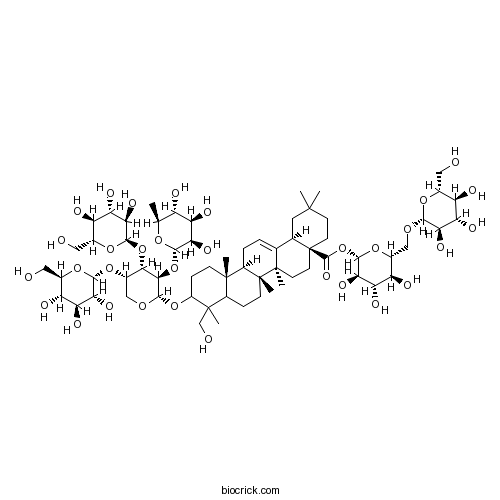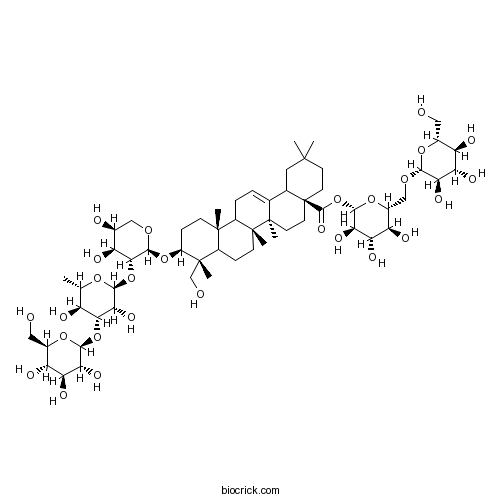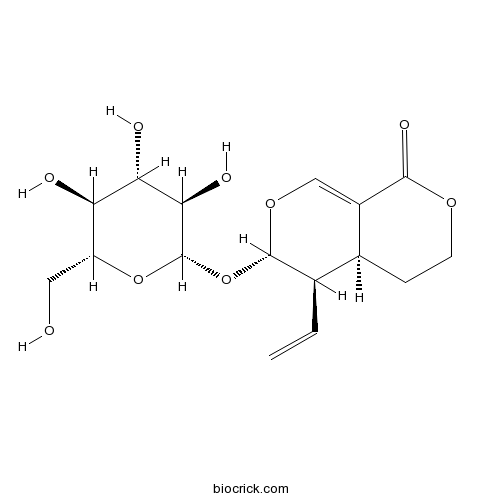Lonicera hypoglauca
Lonicera hypoglauca
1. The products in our compound library are selected from thousands of unique natural products; 2. It has the characteristics of diverse structure, diverse sources and wide coverage of activities; 3. Provide information on the activity of products from major journals, patents and research reports around the world, providing theoretical direction and research basis for further research and screening; 4. Free combination according to the type, source, target and disease of natural product; 5. The compound powder is placed in a covered tube and then discharged into a 10 x 10 cryostat; 6. Transport in ice pack or dry ice pack. Please store it at -20 °C as soon as possible after receiving the product, and use it as soon as possible after opening.
Natural products/compounds from Lonicera hypoglauca
- Cat.No. Product Name CAS Number COA
-
BCN5938
Macranthoidin B136849-88-2
Instructions

-
BCN2808
Macranthoidin A140360-29-8
Instructions

-
BCN6219
Sweroside14215-86-2
Instructions

In-vitro anticancer activity of green synthesized silver nanoparticles on MCF-7 human breast cancer cells.[Pubmed: 27524038]
In recent years, green synthesis of metallic nanoparticles is a growing area of research because of their potential applications in nanomedicine. In the present study we synthesized silver nanoparticles (silver NPs) from AgNO3 using aqueous extract of Lonicera hypoglauca flower as reducing and capping agents. The synthesized silver NPs were characterized using UV-Vis spectroscopy, FTIR, SEM-ED, TEM and SAED. Silver NPs were found to be significantly toxic to MCF-7 cells via the induction of apoptosis whereas sparing normal immune system (RAW 264.7) cells.
[Preliminary Study of Lonicera hypoglauca on Germination Conditions of Sand Culture Seeds and Sterilization Method of Sand Culture Seedling Sterilization].[Pubmed: 26767281]
To explore the germination conditions of Lonicera hypoglauca sand culture seeds and the effects of sand culture seedlings sterilization.
[Gene cloning and bioinformatics analysis of new gene for chlorogenic acid biosynthesis of Lonicera hypoglauca].[Pubmed: 26087546]
To obtain the key genes for chlorogenic acid biosynthesis of Lonicera hypoglauca, four new genes ware obtained from the our dataset of L. hypoglauca. And we also predicted the structure and function of LHPAL4, LHHCT1 , LHHCT2 and LHHCT3 proteins. The phylogenetic tree showed that LHPAL4 was closely related with LHPAL1, LHHCT1 was closely related with LHHCT3, LHHCT2 clustered into a single group. By Real-time PCR to detect the gene expressed level in different organs of L. hypoglauca, we found that the transcripted level of LHPAL4, LHHCT1 and LHHCT3 was the highest in defeat flowers, and the transcripted level of LHHCT2 was the highest in leaves. These result provided a basis to further analysis the mechanism of active ingredients in different organs, as well as the element for in vitro biosynthesis of active ingredients.
[Cloning and bioinformatic analysis of FatB genes in Lonicera japonica Thunb and its substitutes].[Pubmed: 23289155]
A FatB unigene was obtained from the transcriptome dataset of Lonicera japonica Thunb. Full-length FatB cDNA was cloned from buds of Lonicera japonica Thunb., Lonicera japonica Thunb. var. chinensis (Wats.) Bak., Lonicera hypoglauca Miq. and Lonicera dasystyla Rehd. using RT-PCR technology, and named as LJFatB, LHFatB, LJCFatB and LDFatB. The results of bioinformatic analysis showed that LJFatB, LJCFatB, LHFatB and LDFatB and Arabidopsis thaliana AtFatB had a closely relationship. Nucleotide sequences and protein secondary structure of LJFatB, LJCFatB, LHFatB and LDFatB are different and their proteins had conserved FatB substrate binding sites and catalytic activity sites. Transcriptive level of LJFatB, LJCFatB, LHFatB and LDFatB in bud was not significantly different. Therefore, LJFatB, LJCFatB, LHFatB and LDFatB could have the same biological function as AtFatB.
Exploiting genes and functional diversity of chlorogenic acid and luteolin biosyntheses in Lonicera japonica and their substitutes.[Pubmed: 23085319]
Chlorogenic acids (CGAs) and luteolin are active compounds in Lonicera japonica, a plant of high medicinal value in traditional Chinese medicine. This study provides a comprehensive overview of gene families involved in chlorogenic acid and luteolin biosynthesis in L. japonica, as well as its substitutes Lonicera hypoglauca and Lonicera macranthoides. The gene sequence feature and gene expression patterns in various tissues and buds of the species were characterized. Bioinformatics analysis revealed that 14 chlorogenic acid and luteolin biosynthesis-related genes were identified from the L. japonica transcriptome assembly. Phylogenetic analyses suggested that the function of individual gene could be differentiation and induce active compound diversity. Their orthologous genes were also recognized in L. hypoglauca and L. macranthoides genomic datasets, except for LHCHS1 and LMC4H2. The expression patterns of these genes are different in the tissues of L. japonica, L. hypoglauca and L. macranthoides. Results also showed that CGAs were controlled in the first step of biosynthesis, whereas both steps controlled luteolin in the bud of L. japonica. The expression of LJFNS2 exhibited positive correlation with luteolin levels in L. japonica. This study provides significant information for understanding the functional diversity of gene families involved in chlorogenic acid and the luteolin biosynthesis, active compound diversity of L. japonica and its substitutes, and the different usages of the three species.


